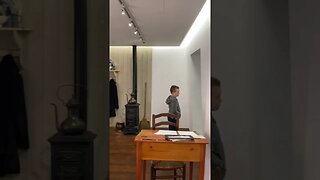방구석 미술관, 조원재, 노르웨이, 뭉크, 장수 아이콘, munch, 병든아이, 장수, 폐결핵, 죽음, 연인이별, 예술가, 화류계 팜므파탈, 사각관계, 마지막 사랑, 우울감
뭉크는 죽음의 공포를 일찍 알았습니다.
다섯 살에 어머니를 결핵으로 잃고
열네 살에 누나를 또 결핵으로 보내고
남동생의 죽음까지 보게 되죠.
사랑하는 가족을 잃은 뭉크는
자신도 언제든지 죽을 수 있다는
죽음의 공포를 평생 안고 살아갑니다.
이러한 가혹한 운명을 뭉크는
예술로 승화시키는데요.
바로 뭉크의 그림 대부분에서 느껴지는
'우울감' 이 바로
뭉크의 트레이드 마크라고 할 수 있습니다.
그 시작을 알리는 그림이
바로 이 병든 아이입니다.
예술에 더 깊은 의미를 부여하는 것은
개인과 그의 삶이며, 우리는 죽어버린 자연이 아니라
바로 그것을 보여줘야 한다.
죽음뿐만 아니라 뭉크에겐
사랑도 인생의 숙제였습니다.
평생 세 번의 사랑을 했지만
세 번 모두 새드엔딩을 맞게 되는데요.
첫 번째 사랑은 세 살 연상인
화류계 팜므파탈을 만나
마음에 큰 상처를 입은 채 이별하고,
두 번째 사랑은 친구들과 사각관계에
빠져 큰 고통을 겪은 채 끝나게 됩니다.
마지막 사랑도 만만치 않았는데요,
이미 두 번의 사랑으로 사랑에 대한
마음이 식어버린 뭉크는
사랑보다 예술가의 삶을 살기로 결심하고
연인에게 이별을 통보합니다.
그 과정에서 뭉크를 너무나 사랑했던
연인이 쏜 총에 왼손 손가락을 다치게 되는
사건까지 겪게 되죠.
뭉크는 사랑마저도 '죽음의 공포'를
만나게 되는 운명이었나 봅니다.
뭉크는 그 후로 81세까지 평생
홀로 은둔하며 그림만 그리며 살았다고 하네요.
The Sick Child (Norwegian: Det syke barn) is the title given to a group of six paintings and a number of lithographs, drypoints and etchings completed by the Norwegian artist Edvard Munch between 1885 and 1926. All record a moment before the death of his older sister Johanne Sophie (1862–1877) from tuberculosis at 14. Munch returned to this deeply traumatic event again and again in his art, over six completed oil paintings and many studies in various media, over a period of more than 40 years. In the works, Sophie is typically shown on her deathbed accompanied by a dark-haired, grieving woman assumed to be her aunt Karen; the studies often show her in a cropped head shot. In all the painted versions Sophie is sitting in a chair, obviously suffering from pain, propped by a large white pillow, looking towards an ominous curtain likely intended as a symbol of death. She is shown with a haunted expression, clutching hands with a grief-stricken older woman who seems to want to comfort her but whose head is bowed as if she cannot bear to look the younger girl in the eye.
Throughout his career, Munch often returned to and created several variants of his paintings. The Sick Child became for Munch—who nearly died from tuberculosis himself as a child—a means to record both his feelings of despair and guilt that he had been the one to survive and to confront his feelings of loss for his late sister. He became obsessive with the image, and during the decades that followed he created numerous versions in a variety of formats. The six painted works were executed over a period of more than 40 years, using a number of different models.[1]
The series has been described as "a vivid study of the ravages of a degenerative disease."[2] All of the paintings and many of the ancillary works are considered significant to Munch's oeuvre. An 1896 lithograph in black, yellow and red was sold in 2001 at Sotheby's for $250,000
-
 0:50
0:50
SnowTheComedian
1 year agoWhat’s a munch
2 -
 0:15
0:15
Sophiebabygram
3 years agoMunch, Munch
94 -
 0:08
0:08
Strawhatlyric
1 year agoMunch?
2 -
 0:58
0:58
Kwauliti
1 year agoMunch
5 -
 0:10
0:10
Rasin777
1 year agoMunch
1 -
 0:36
0:36
Destination: Everywhere
1 year ago#travel #belgium #daytrip #vangogh #maison
10 -
 4:41
4:41
Corné Akkers Artworks
6 months agoCreating The Magere Brug in Amsterdam – 09-11-23
75 -
 2:13
2:13
JennaKarl
1 year agoPeanut Butter Sandwich
17 -
 1:37
1:37
FIBRE OPTIC JUNKIE
1 month agoChocolate Biscuit Mongoloids
213 -
 0:59
0:59
Sgt.T.J.Albin
2 months agoCrunch It OUT...
18